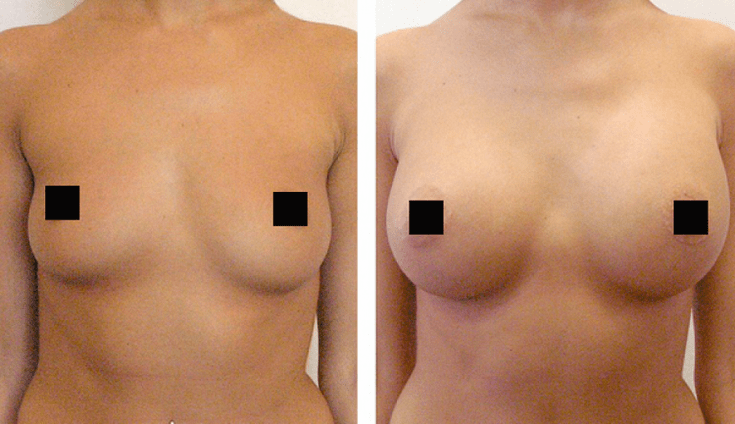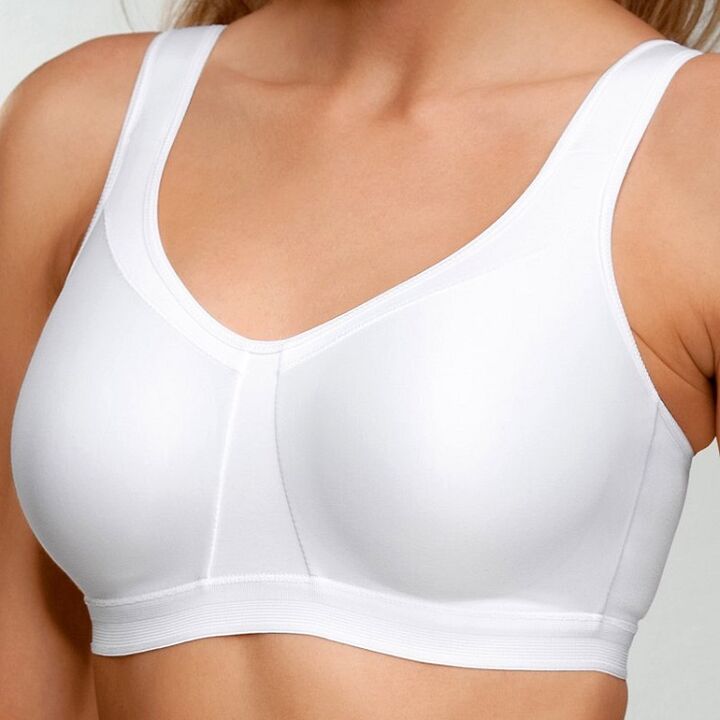Breast augmentation with hyaluronic acid is considered the safest method today. Prior to the onset of this method, mammoplasty was used.
Surgery is performed on the chest, where implants are inserted. The chest increased by some measure, but looked unnatural.
At the same time, no one can give a full guarantee that the operation will take place without complications. The advent of this method of breast augmentation exposes women to a lower risk.

How are breasts supplemented with hyaluronic acid?
Many have heard of hyaluronic acid. One knows it as a major component of synovial fluid, which provides lubrication of articular cartilage in connective tissue, and one has heard of it from the world of cosmetology.
In particular, it is known for maintaining the firmness and elasticity of the skin. How does this happen?
Hyaluronic acid has a unique ability to attract and hold water like a sponge, providing volume and hydration to tissues.
Thanks to this feature, these polysaccharides have been successfully used in plastic surgery for breast augmentation.
This technique allows you to get the desired breast size without having to undergo surgery.
Breast augmentation is done with gel injections, which are skin fillers based on hyaluronic acid.
Because these polysaccharide molecules are large and store large amounts of water, they are similar in consistency to thick gels. For a single size breast augmentation, approximately 300 ml of gel is required.
How is the procedure performed? The procedure was painful, so it was performed under local anesthesia. Prior to surgery, all necessary tests are taken and the day of surgery is set.
Breast augmentation without surgery takes about 40 minutes. The drug is injected into the chest using a cannula.
This is a special tube that resembles a feather and replaces a needle. At the injection site, a permanent puncture is present, where cosmetic sutures are applied.
Breasts are given the exact shape that the patient wants to have. It is very important that the procedure is performed by an experienced specialist, as not all doctors are able to insert the gel into the breast properly.
After the end of the procedure, on days 2 and 3, an unpleasant pain and a burning sensation appear in the mammary gland area. Redness on the skin of the breast, the formation of hematomas, itching are also possible. All these symptoms will soon disappear.
Recovery period
Within 1 month, the patient should not expose the upper body to physical activity. Both excessive heat and cold are contraindicated.
You should not put pressure on the mammary glands, i. e. massage or sleep on them, because the gel can shift and deformed breasts.
To support the breasts, it is recommended to wear compression garments. The recovery period depends on the age of the patient, the quality of the epidermis, the amount of gel injected and lifestyle.

Duration of effect
Fillers are divided into absorbent and non -absorbent. For breast augmentation, the first type of injection is used mainly because it is based on hyaluronic acid, which dissolves quickly.
The effect of its influence is temporary - from 6 months to a year. Non -absorbable injections are dangerous because there are various complications, so they are practically not used.
Botox breast augmentation is often confused with skin fillers. The difference is that Botox preparations are harmful to the body because they contain botulism toxins.
Gels with hyaluronic acid are fillers that increase tissue volume.
What types of breast fillers are used?
There are many different hyaluronic acid fillers for breast augmentation.
Because their properties differ from each other, the specialist should choose them, based on the characteristics of the patient’s skin and mammary glands.
It is necessary to consider one more thing: gels with hyaluron have an antidote. It is a special enzyme called hyaluronidase. He is capable of destroying unsuccessful results.
Contraindications and complications
Does hyaluronic acid breast augmentation have contraindications? There are a number of cases when it is impossible to use gels for breast augmentation.
Contraindications include any breast neoplasm, both benign and malignant.
Such an operation is not performed even if a woman is planning a pregnancy, because the unabsorbed gel residue can squeeze the milk ducts during breastfeeding. In case of autoimmune disease, intervention on the mammary glands is contraindicated.
When performing an ultrasound scan of the mammary gland or an X-ray examination, cysts do not differ from the accumulation of fillers and are often confused.
This complicates organ examination for possible neoplasms. Palpation also complicates diagnosis.
If the breasts are inflamed, surgery and antibiotics will be needed for treatment.
For the sake of perfection, many women risk their health, not paying attention to contraindications.
The effect after the introduction of hyaluronic acid is undeniable, and the result is real: the breasts become elastic and plump, and the skin is much younger.
But these results are temporary, so you have to repeat the procedure. Interventions like this can have negative consequences.
Pros and cons of the procedure
This method is not suitable for women with organ prolapse (ptosis). This procedure will only make the problem worse.
Hyaluronic acid dissolves over time, but before that, procedures related to exposure to the mammary glands should not be used.
The fact that this procedure does not much injure the mammary glands is a great advantage, but after the administration of the drug in the mammary glands, due to swelling of hyaluronic acid, soft tissues, ducts, and ducts are compressed.
The drug, occupying a specific space in the chest, acts on nearby tissues.
Why is hyaluronic acid breast augmentation banned in France? This method does not pose any specific risks and threats to health.
But as a preventive measure in this country they decided to implement a ban, because after the introduction of hyaluronic acid, the diagnosis of malignant tumors is very complicated.


























